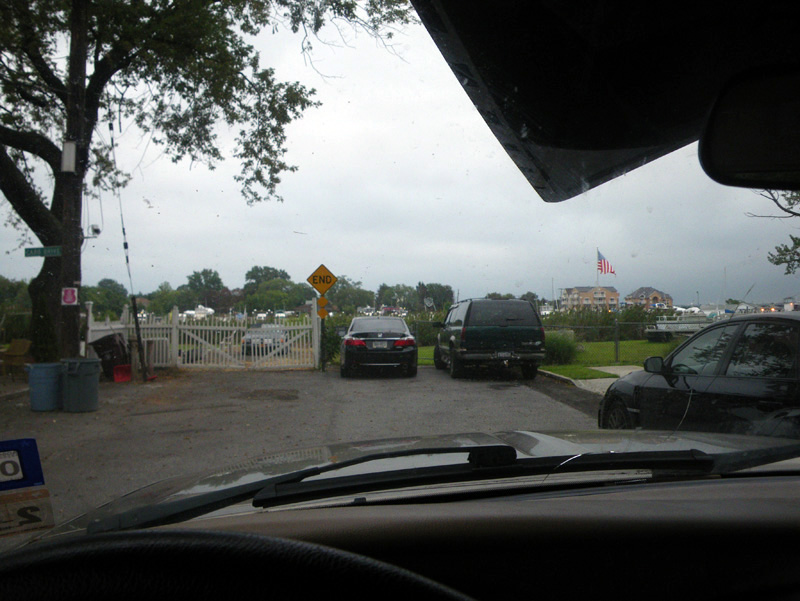
When we drove to the area in Throgs Neck that I thought might be a good place to put the boat in the water, we were met with nothing but fences and private property.
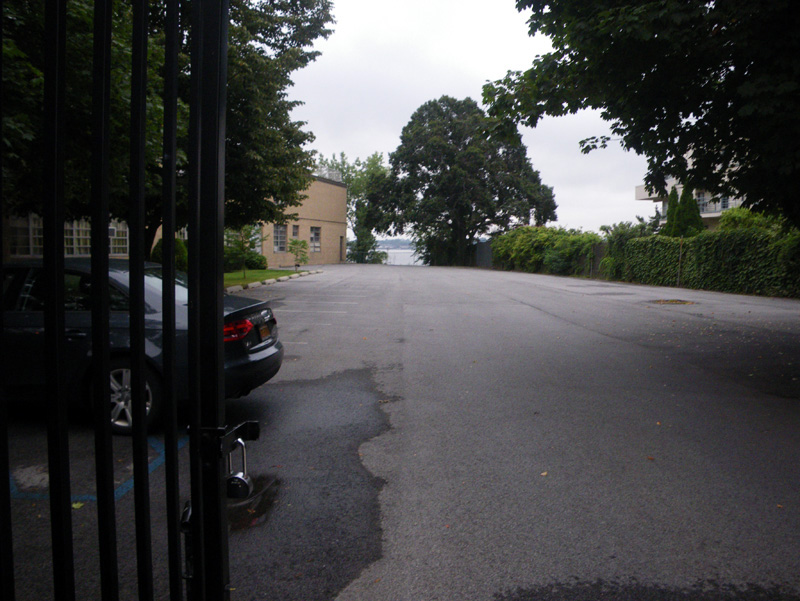
The only access seemed to be at a middle-school that was still closed for summer vacation.
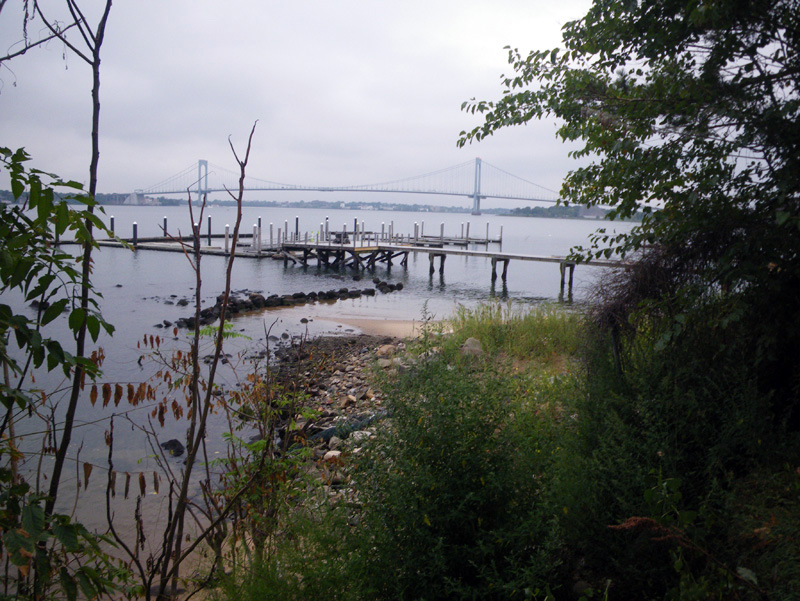
They had a pretty little beach right on the East River,
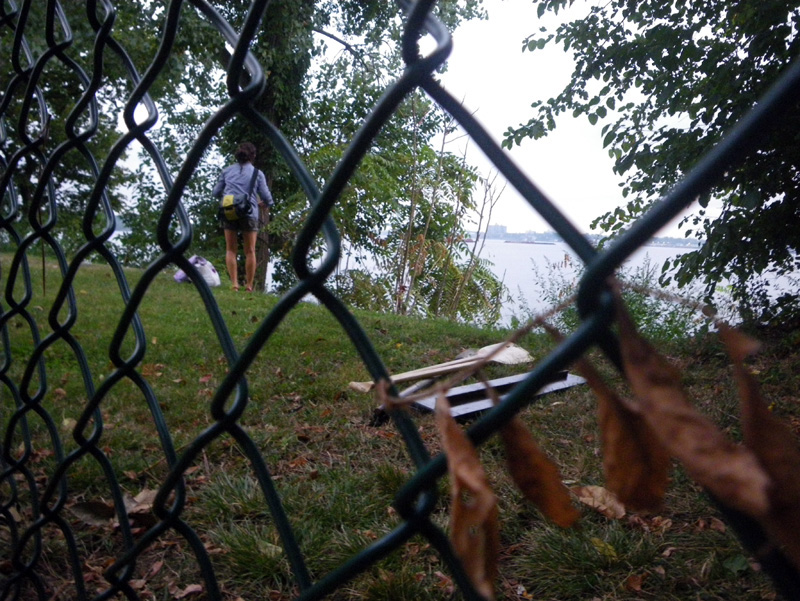
and an unlocked fence,
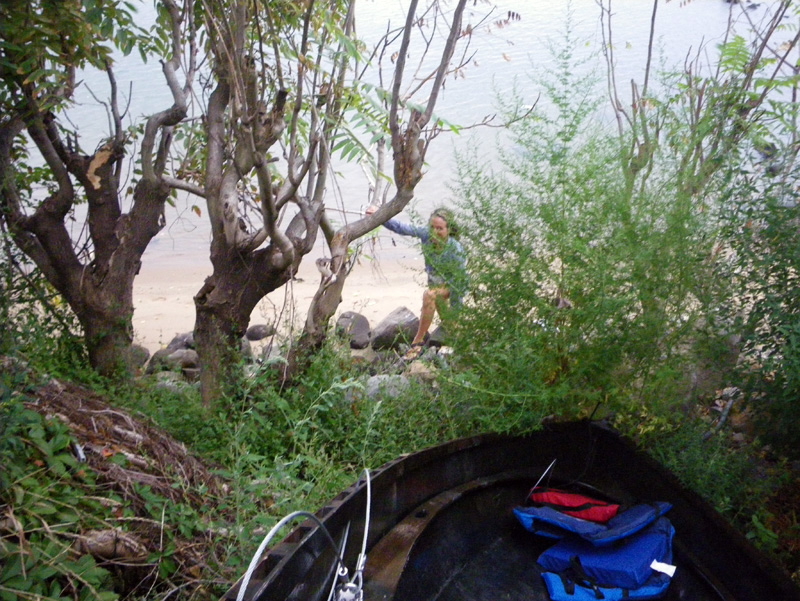
so I reparked the car while Lisa waited with the boat.
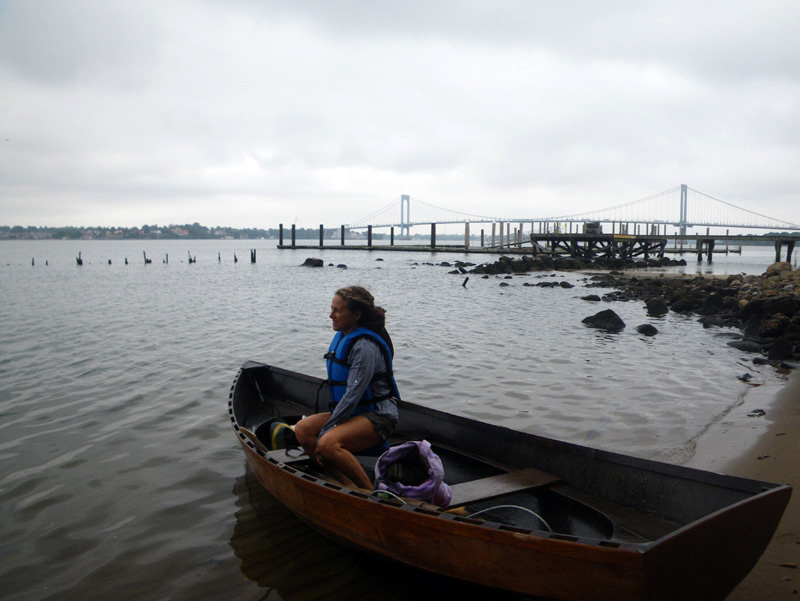
“This will all be legal once we get out on the water.” I told Lisa,
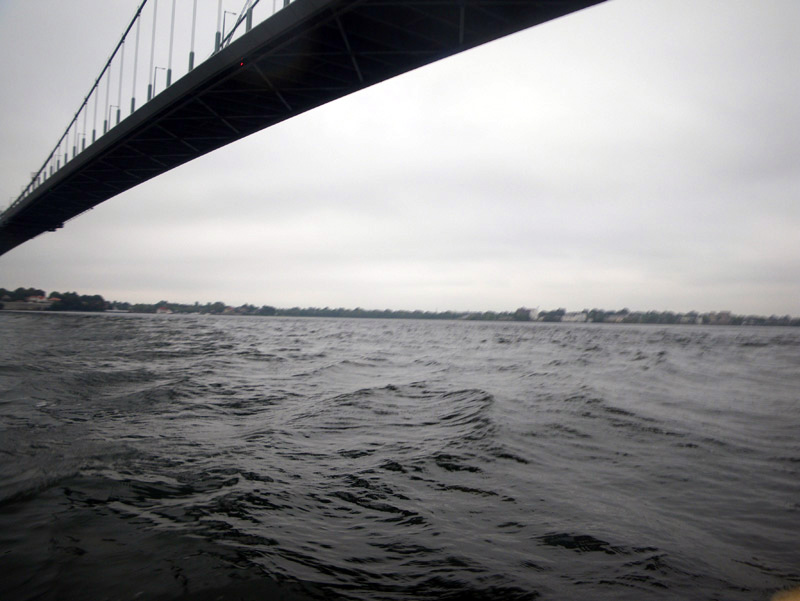
and in no time we were floating away, under the Whitestone Bridge.
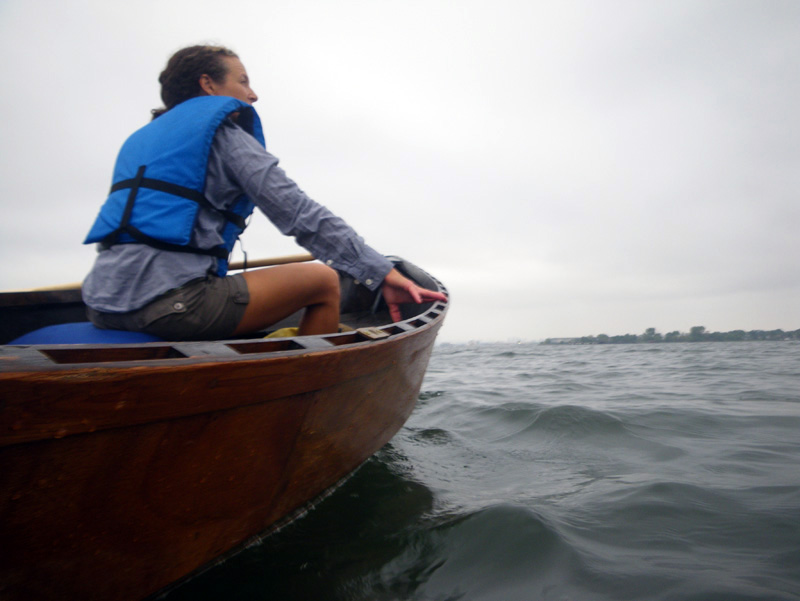
“I’ve never done anything like this before.” said Lisa.
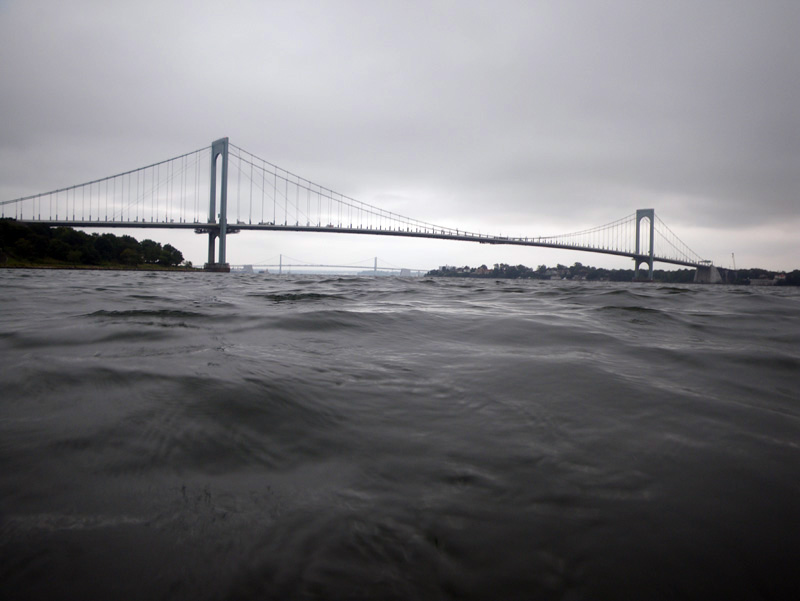
I hadn’t either, to be honest. This was the first time my new boat had been out in the East River, and it was being put to the test in the fast current.
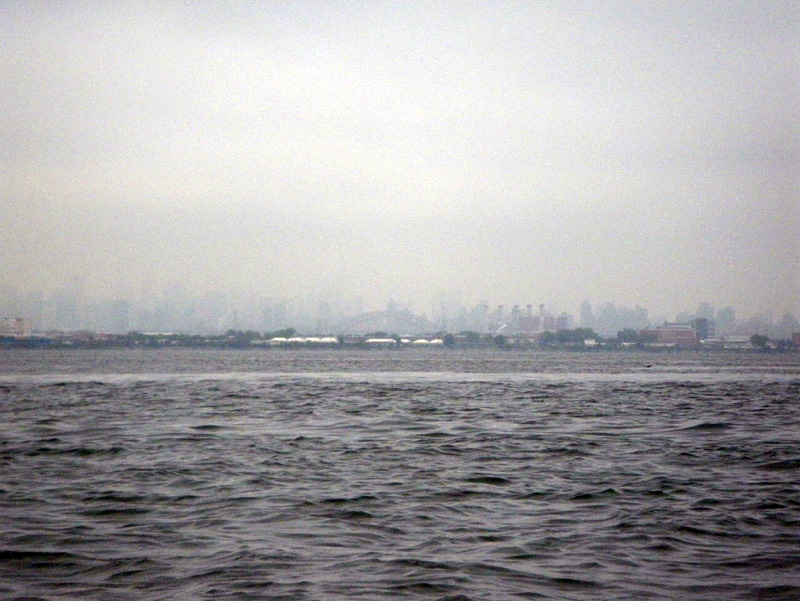
You could see Manhattan in the distance,
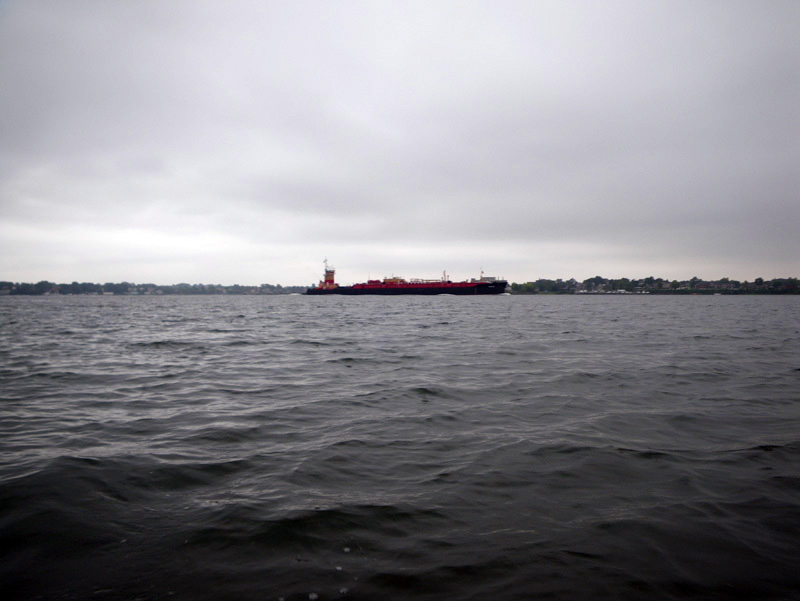
and huge barges moved out in the shipping channel.
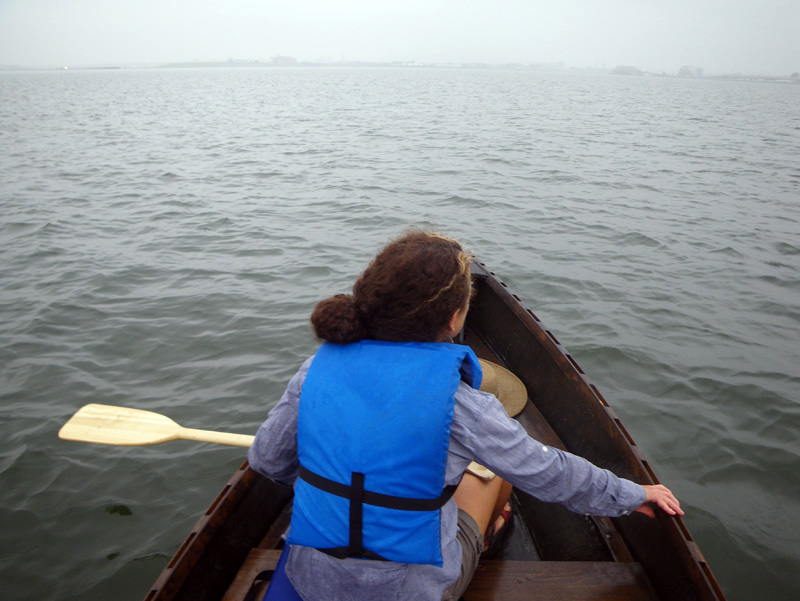
We were about to cross the mouth of the Bronx River, a mile long expanse of open water.
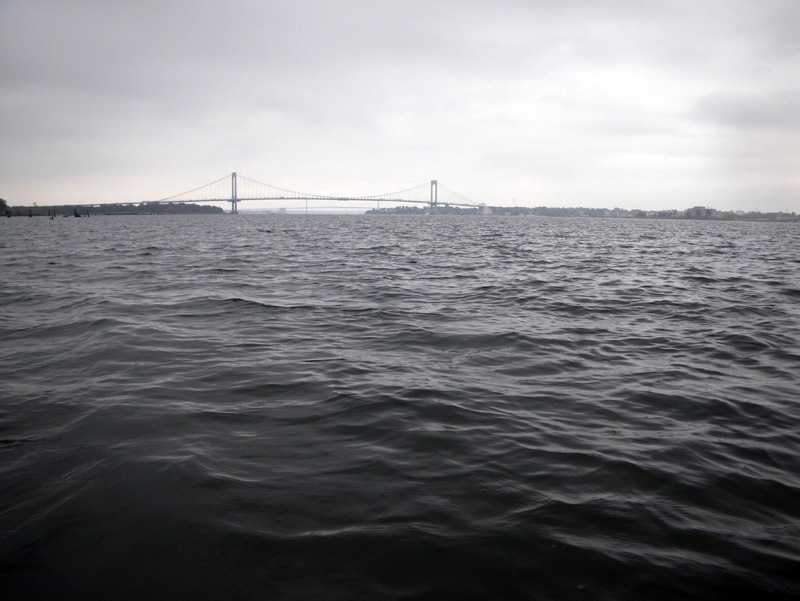
“Are you ok with this?” I asked.
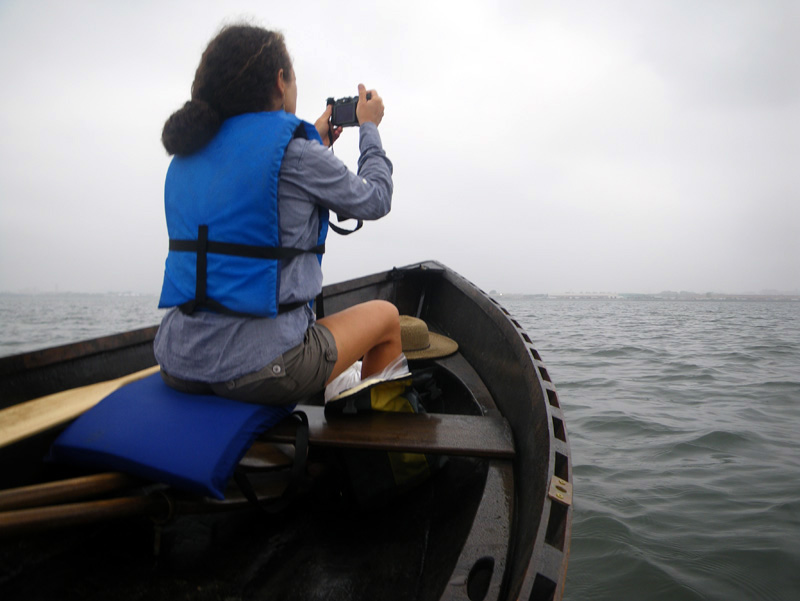
“Sure!” said Lisa. She was in full observation mode now,
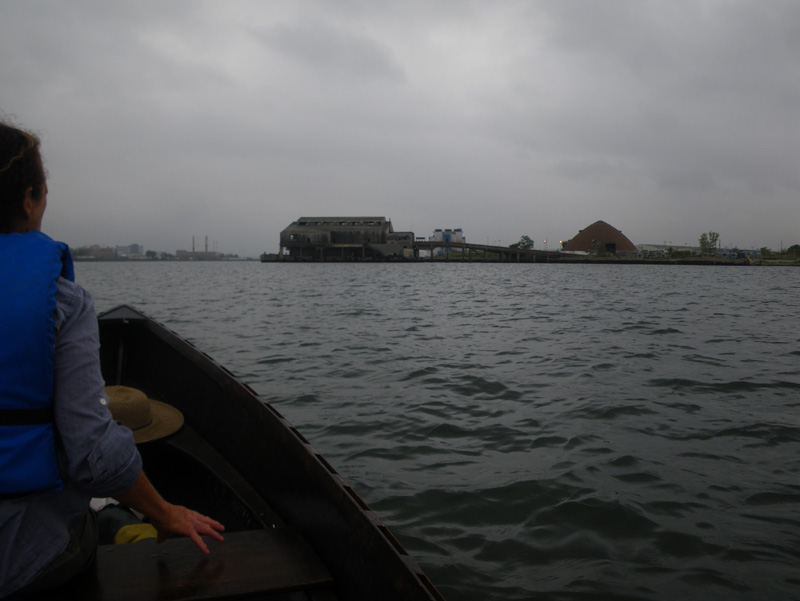
and Hunt’s Point was coming into view.
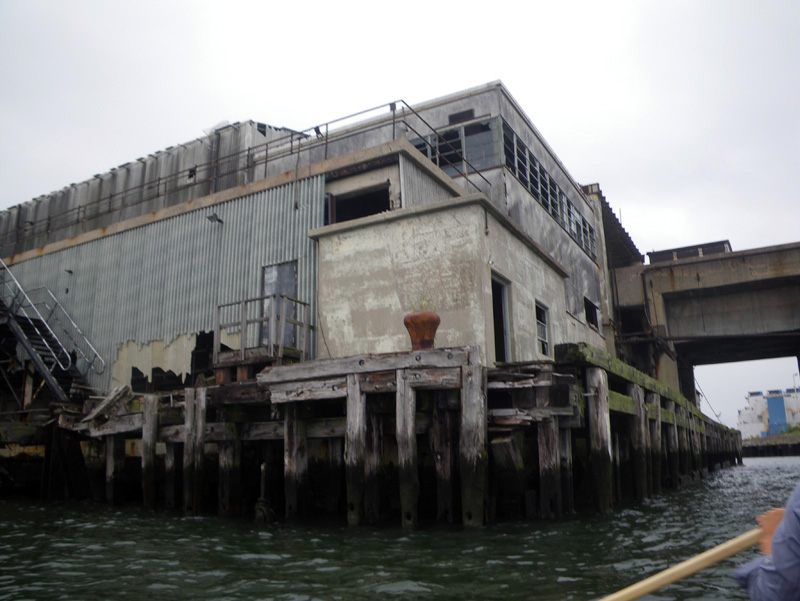
We passed a huge abandoned dry-dock,
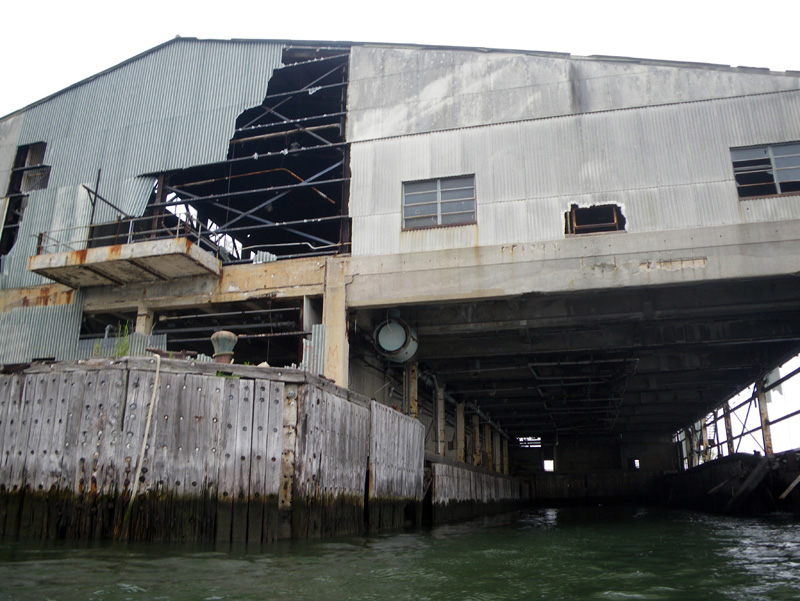
and I listened to the water being sucked through it’s pilings like a whale’s mouth.
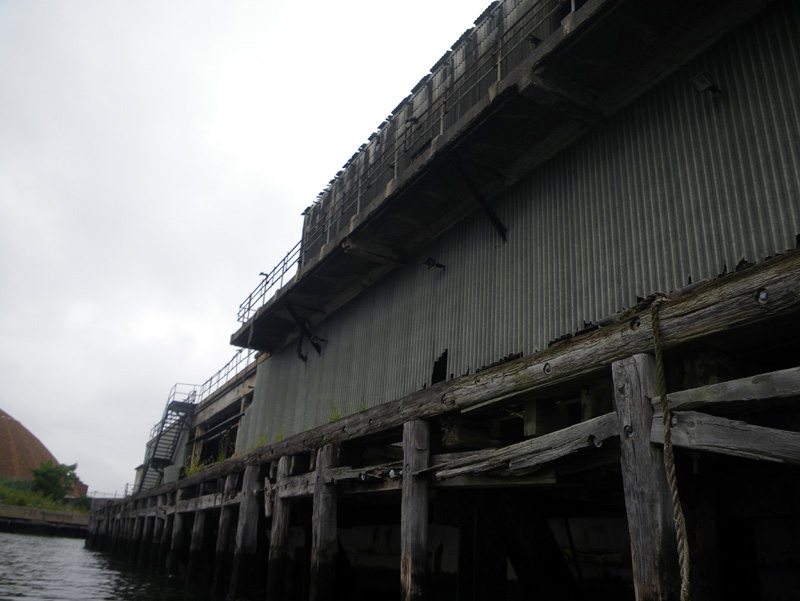
Around the leeward side of the dry-dock, we pulled up to take a break.
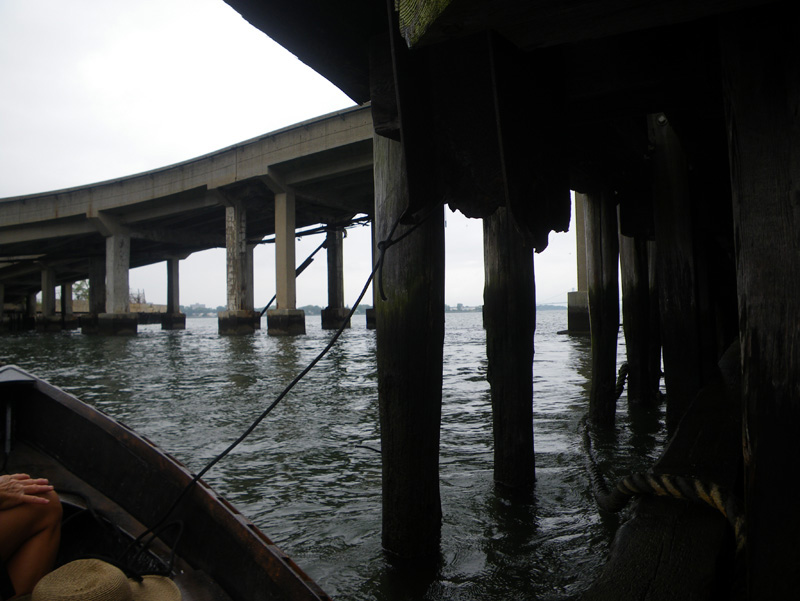
Lisa tied our bow to the dock,
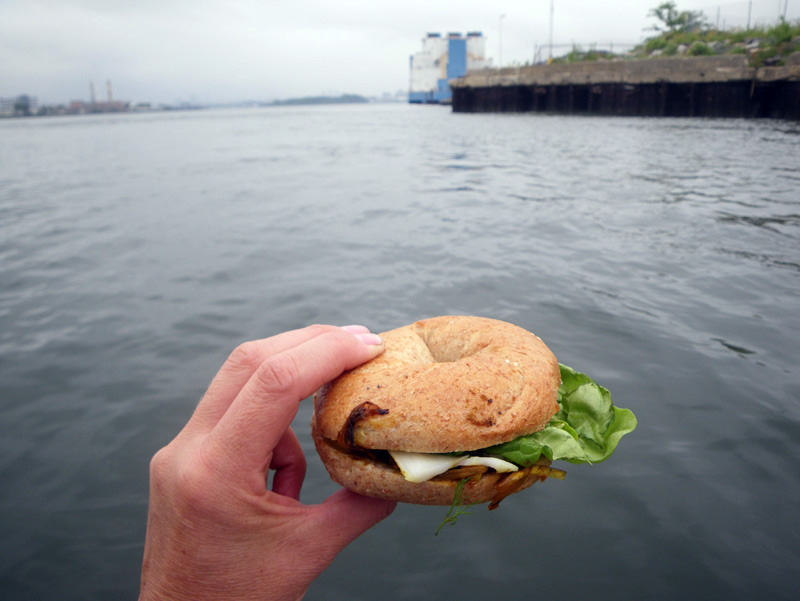
and produced amazing sandwiches for lunch.
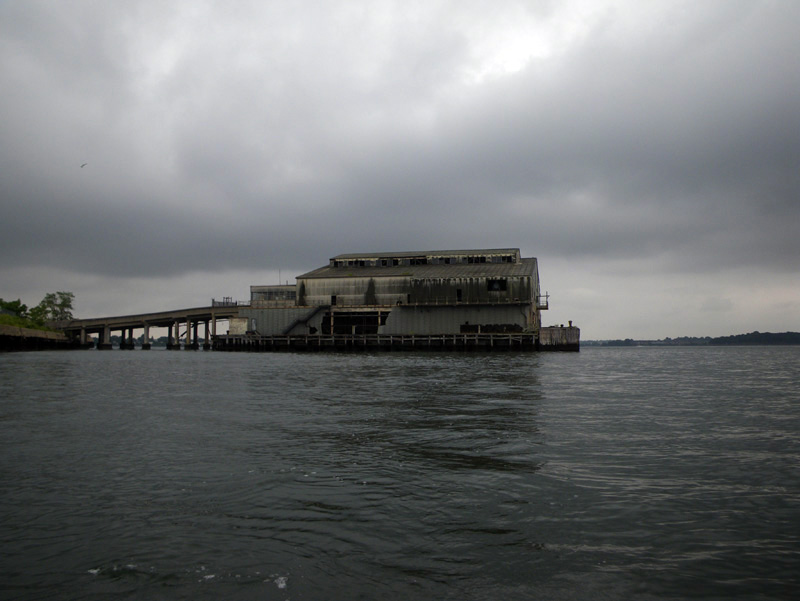
Now it was time to set out for our real mission,
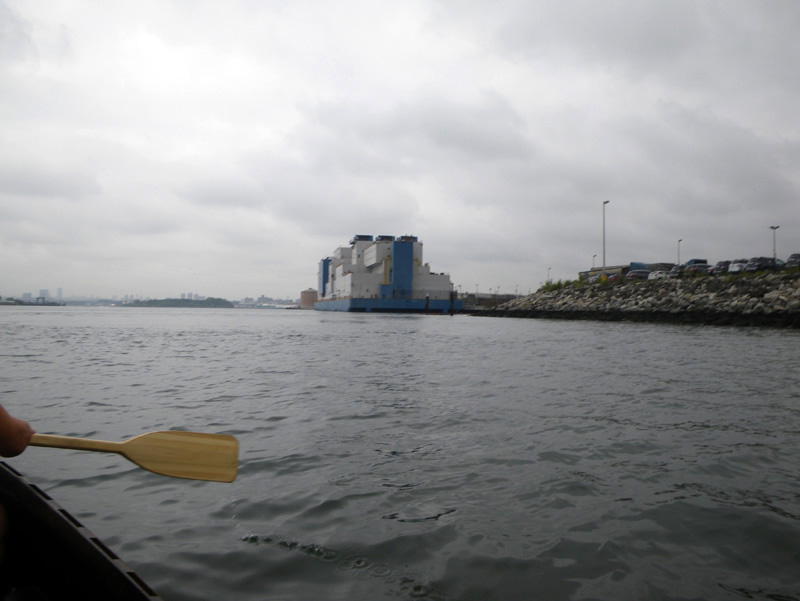
the Vernon C. Bain Correctional Center.
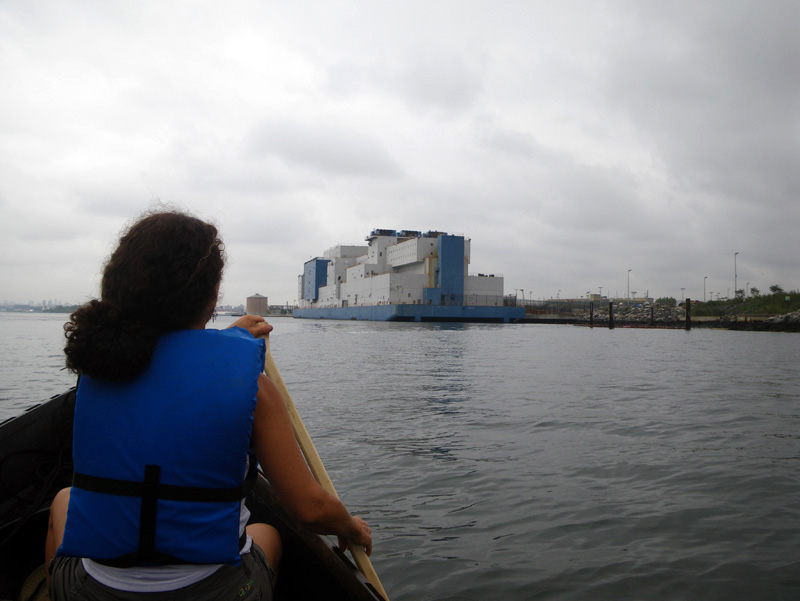
Lisa came across it when she was researching prisons in New Orleans. That’s where this thing was made.
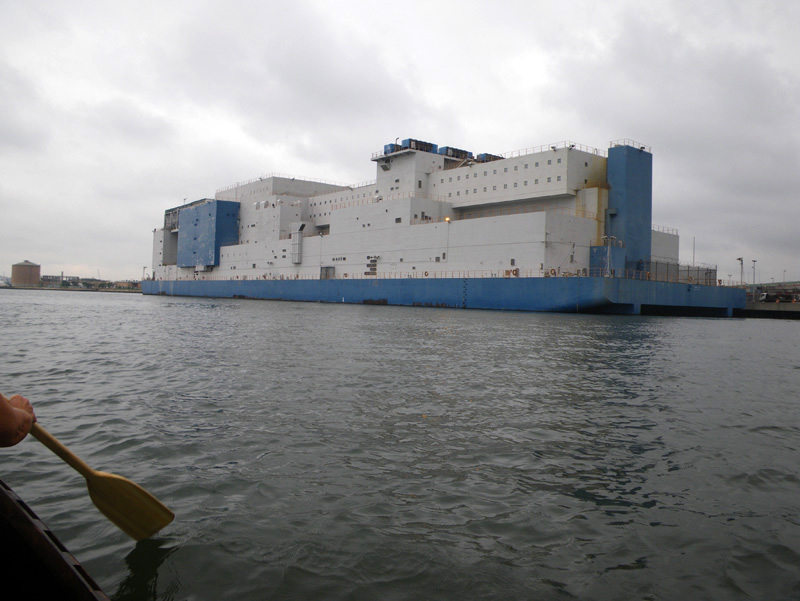
It was brought to New York City in 1992 to help overcrowding at Rikers Island.

When Lisa told me about it, I imagined a British ‘Prison Hulk’. That was the name for the decommissioned naval vessels that were used to house inmates in the 18th century.
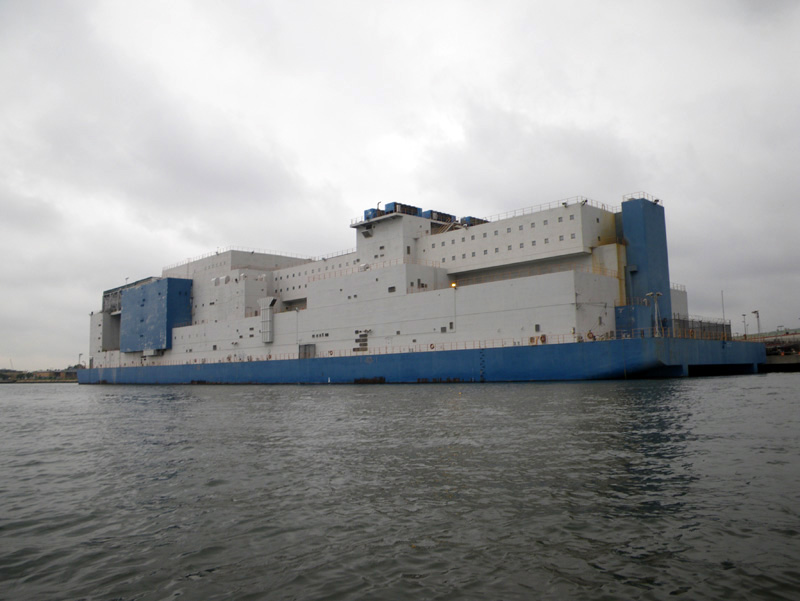
But the Vernon C. is a state-of-the-art prison facility,
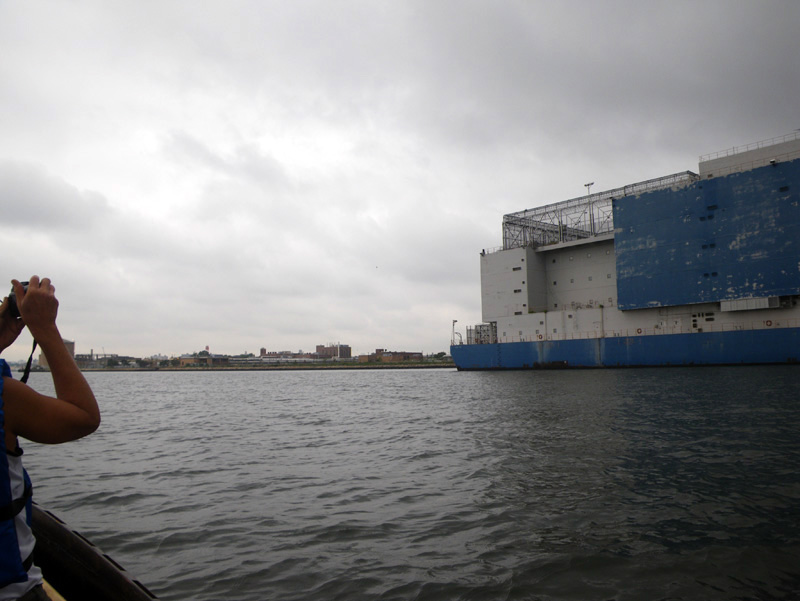
complete with a gym, library, 16 dormitory style rooms and 100 cells. It even has an outdoor basketball court.
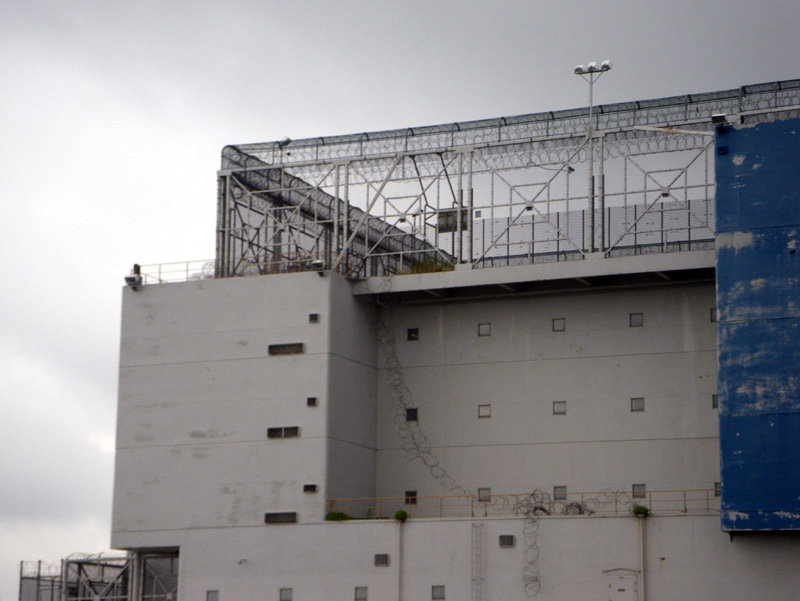
There seemed to be some chinks in the armor though, like this stray piece of razor wire hanging oddly from the basketball court.
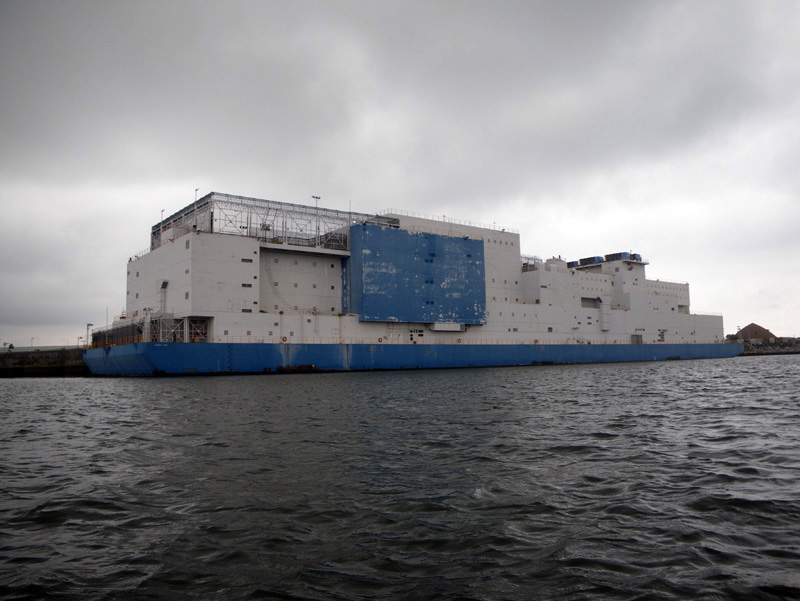
Also, the whole thing seemed to be listing, ever so slightly, to the starbord side.
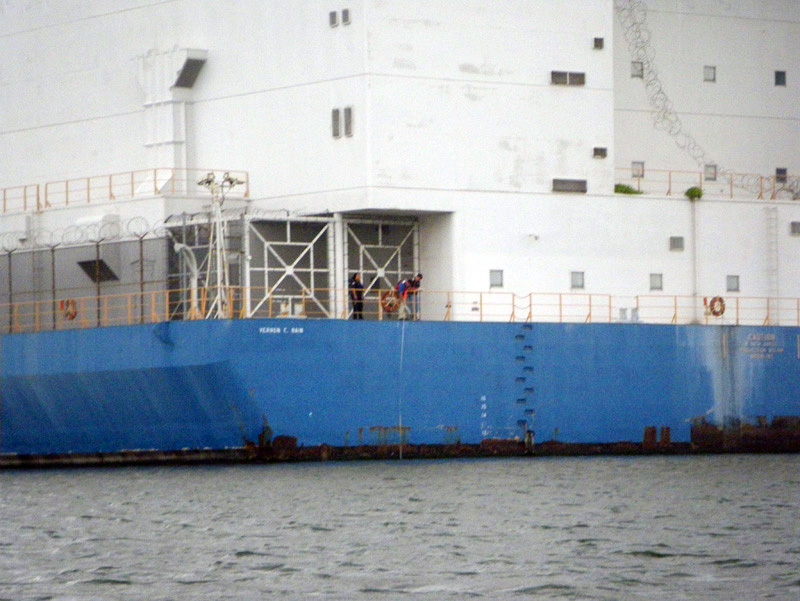
This observation seemed confirmed when we saw a crew come out and dangle a tape measure over the side of the boat. Were they meassuring the distance from the water on one side to see if it was different from the other?
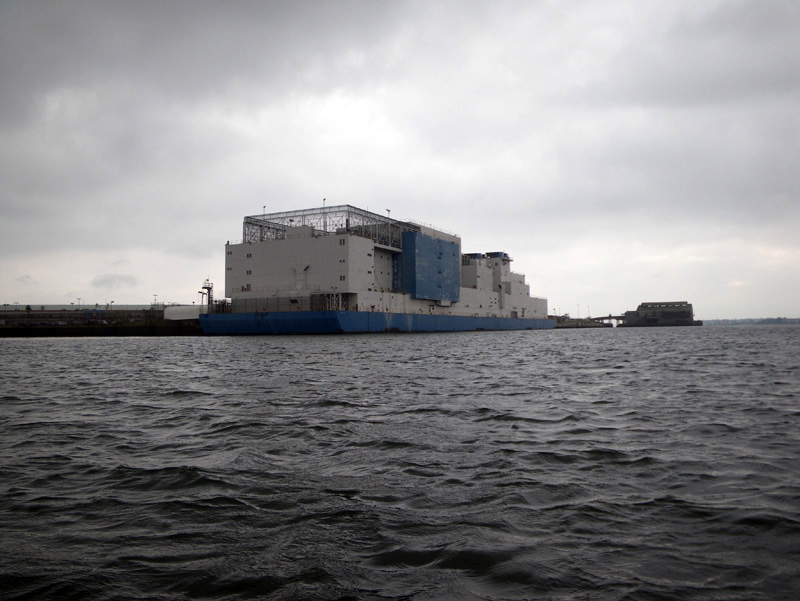
Could the Vernon C. Bain Correctional Center be sinking?
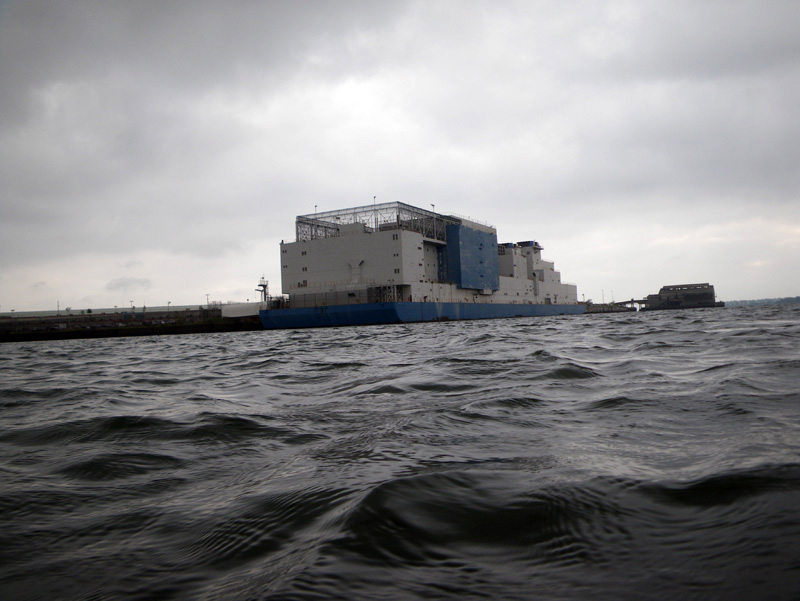
The current was swelling, wave after wave pushing us away from the prison barge,
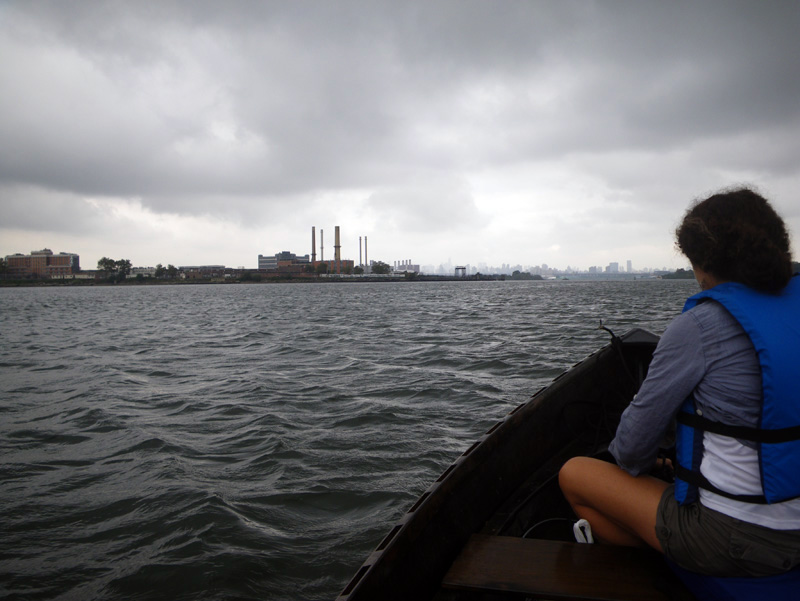
and a huge storm cloud moved past.
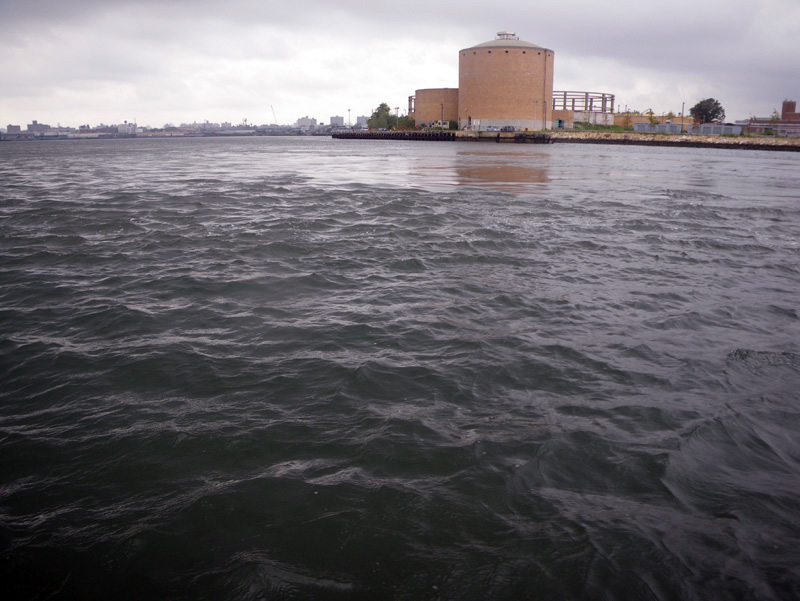
Pockets of still water appeared in the current. “Upwelling,” I told Lisa, “water being pushed up from the bottom of the East River.” It was a sign that the current was still flowing strong to the south, and we needed a north flowing tide for our ride back.
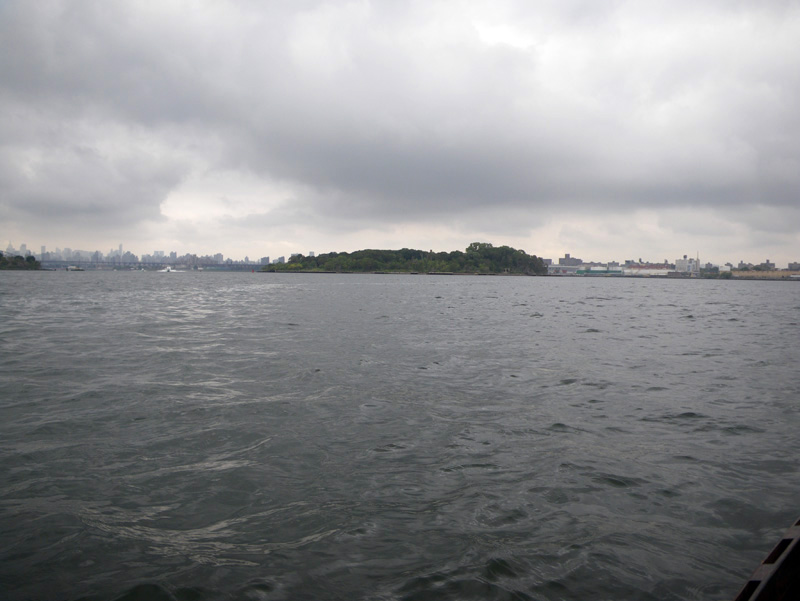
We decided to pull over and wait for the tide to turn around at North Brother Island.
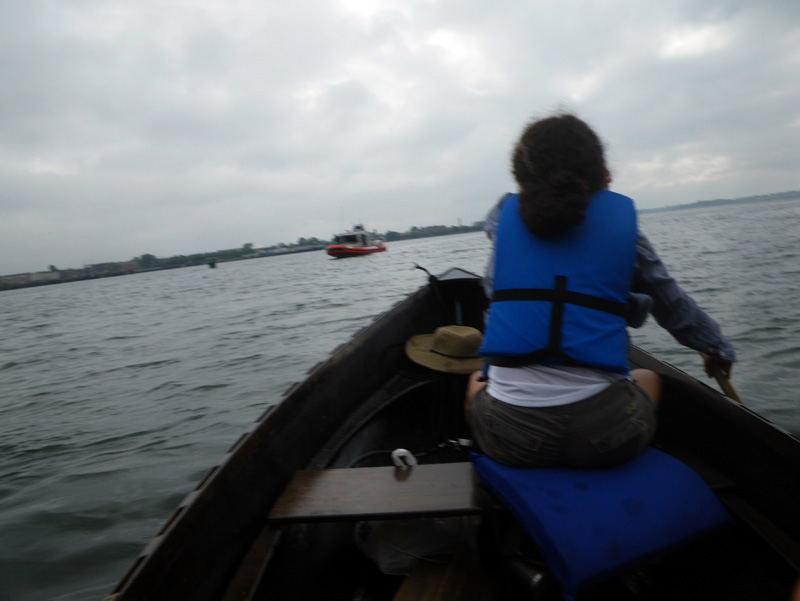
No sooner had we pointed our boat in the direction of North Brother, than we were stopped by the Coast Guard.
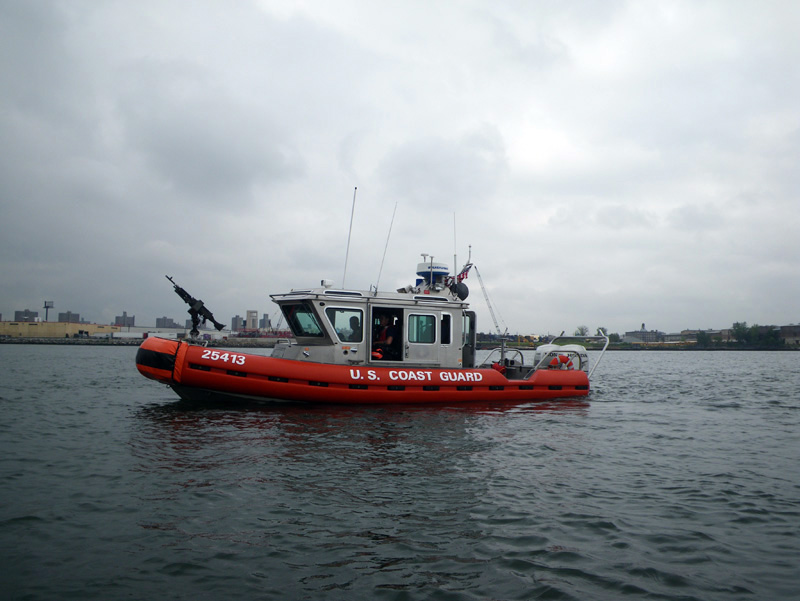
“Don’t land on that island,” they said. “It’s dangerous.”
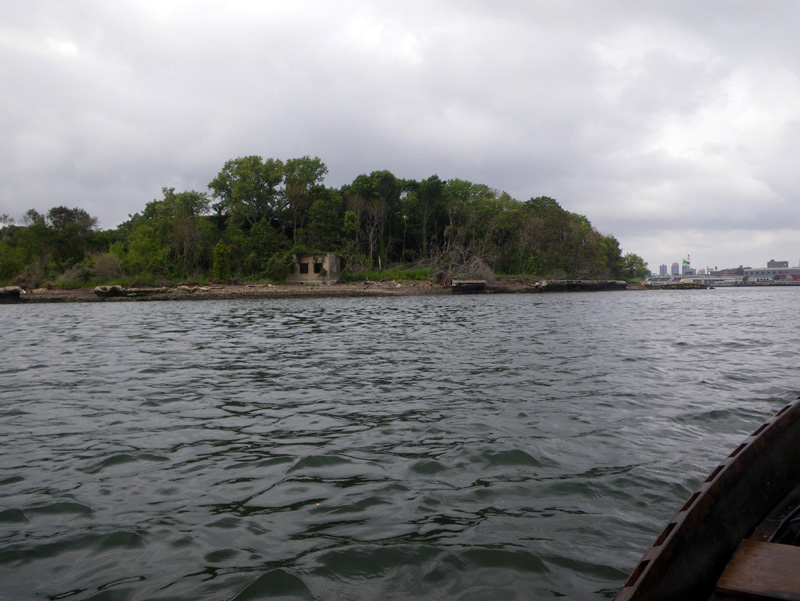
What could be dangerous about a deserted island, we wondered. The prisons, hospitals, and reform schools on North Brother have all been abandoned since the 1960’s.
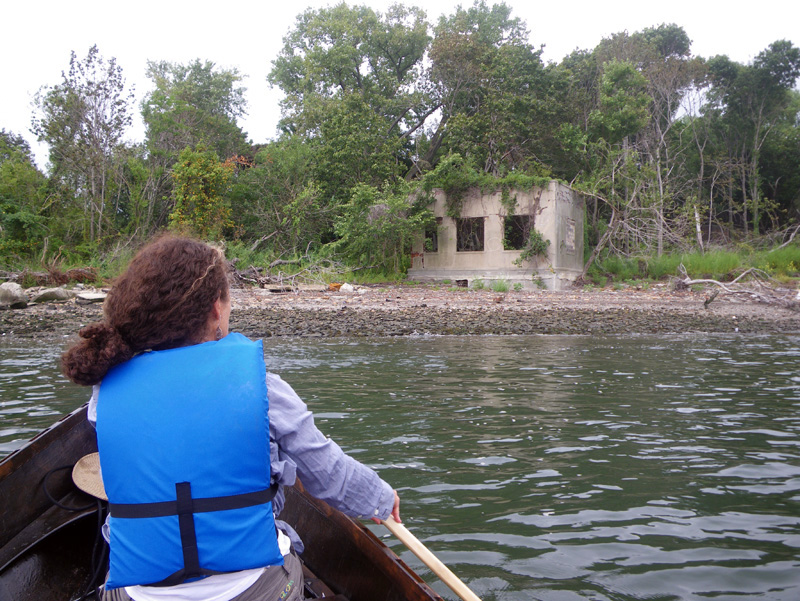
We decided to take our chances,
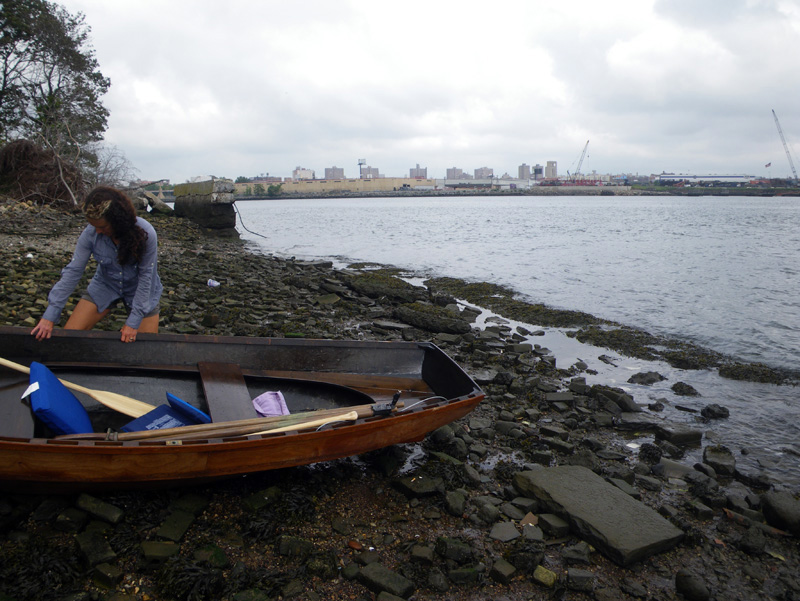
and pulled up the boat to wait.
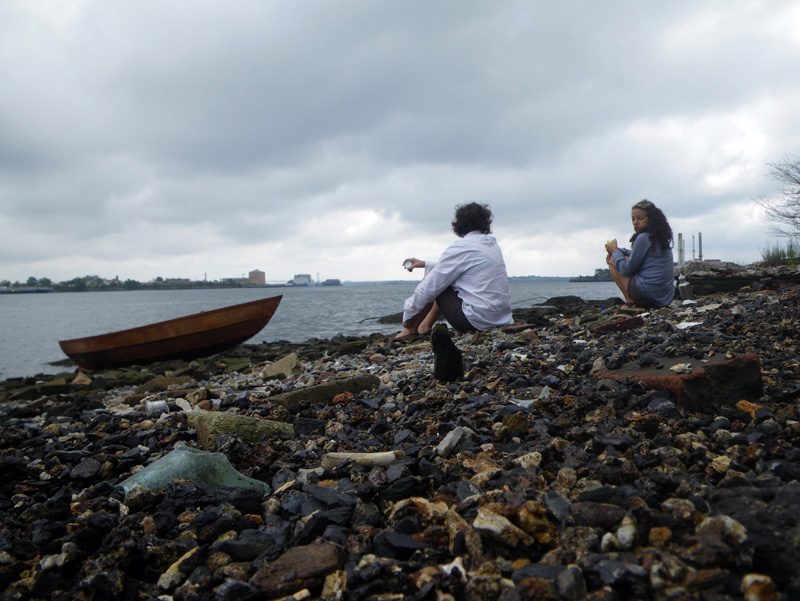
We talked about how water is used as a barrier; phycological as well as practical.
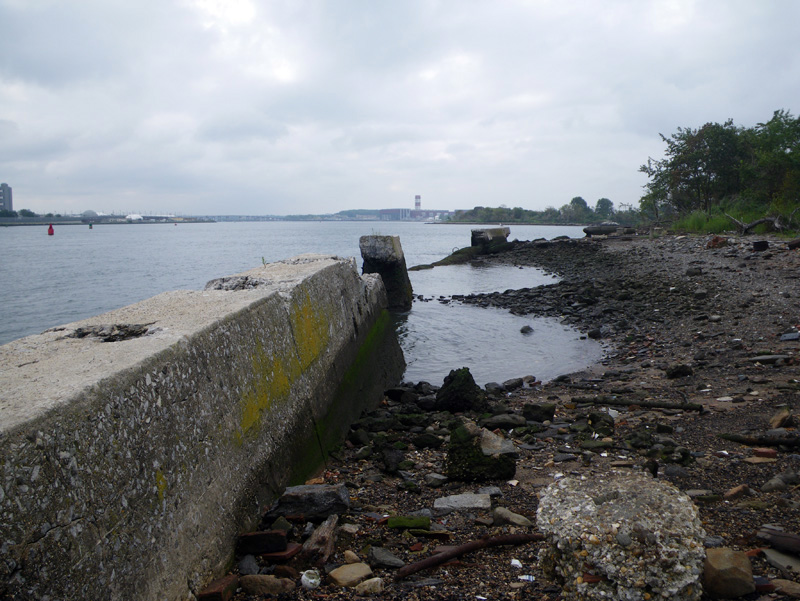
Rikers Island, North Brother Island, and the prison barge, have all had been used at one time or another as a place to keep people away from other people.
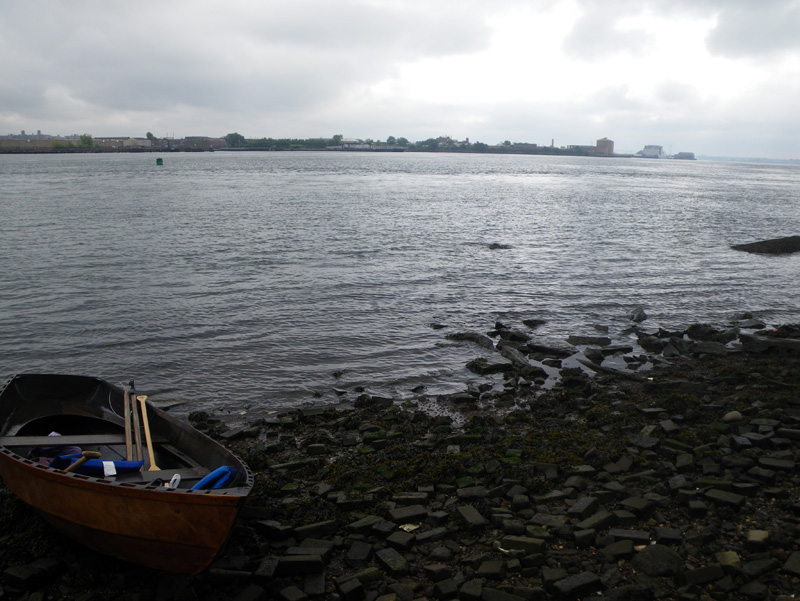
Lisa is an artist, and she makes sculpture about how ideas present themselves in the built environment. Her artwork pokes at the distinction between open space, private space, captive space and free space. The water can be all those things, I thought, both a road and a barrier.
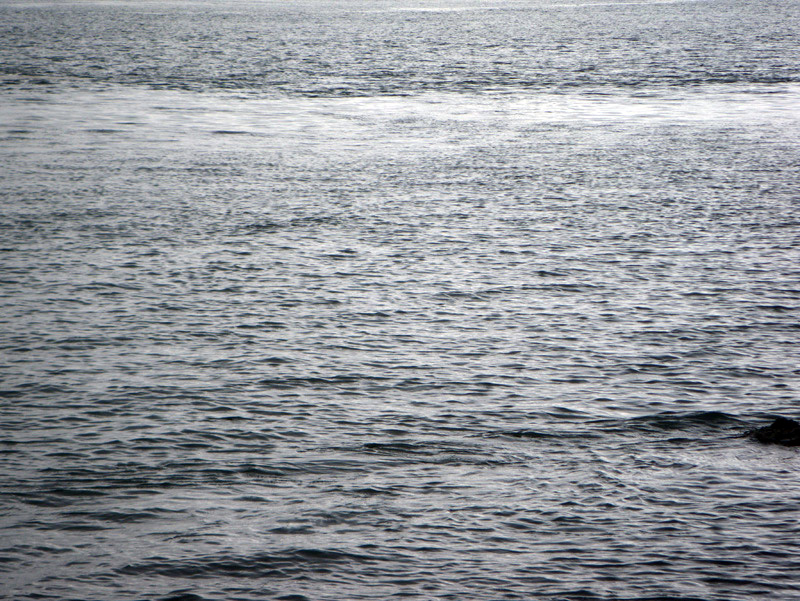
We could see the tide turning out in the bay,
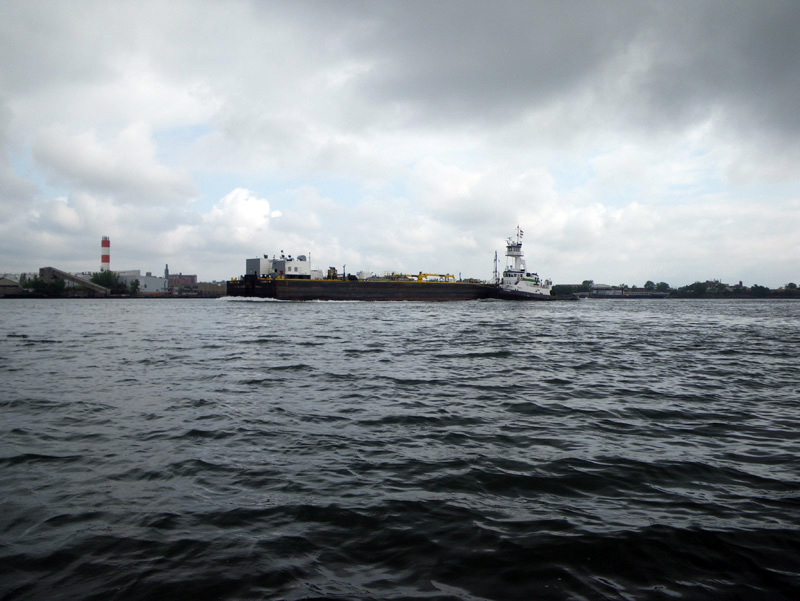
so we decided to make a run for it.
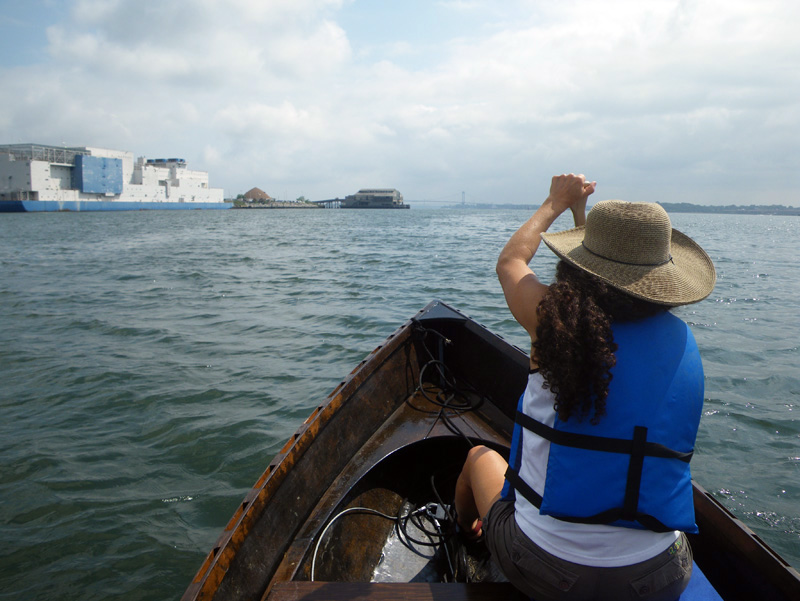
The storm cloud had past and it was turning into a windy, sunny day.
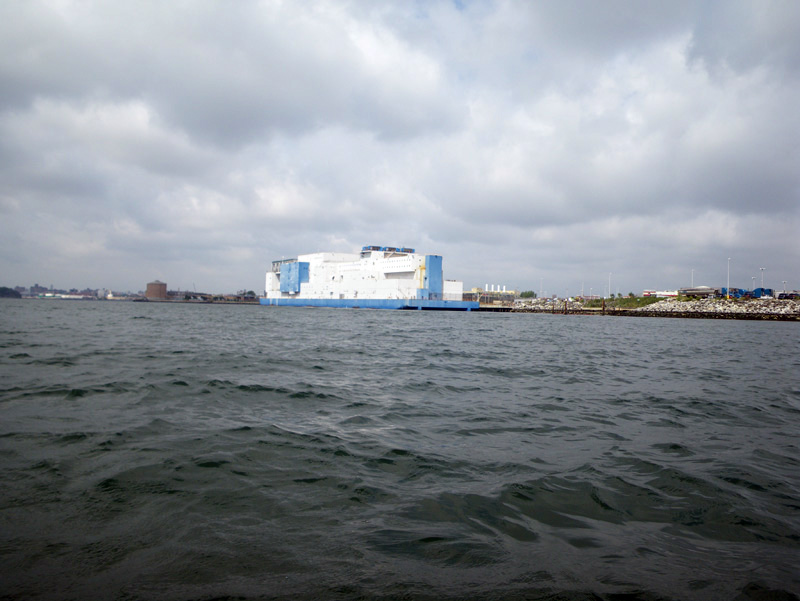
The problem was, it was windy in the wrong direction.

The tide was helping us north but the wind was much stronger against us,
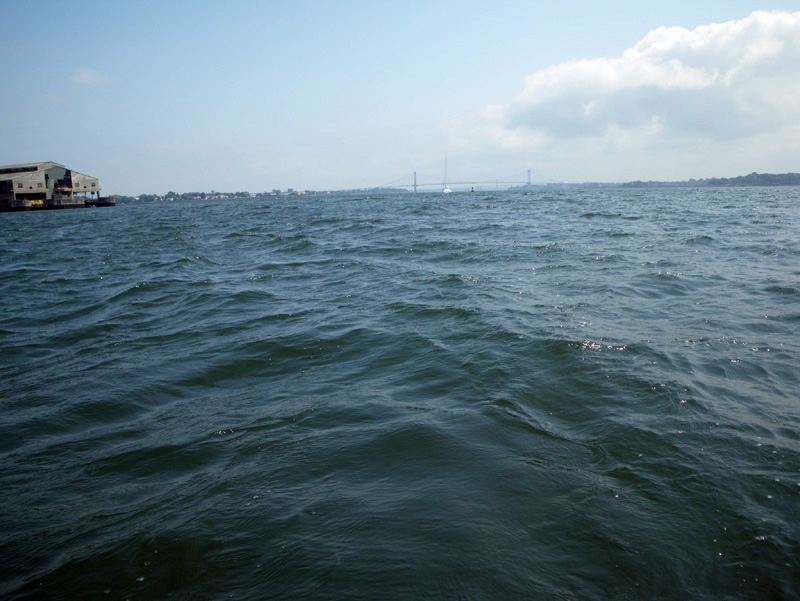
and we couldn’t make any headway.
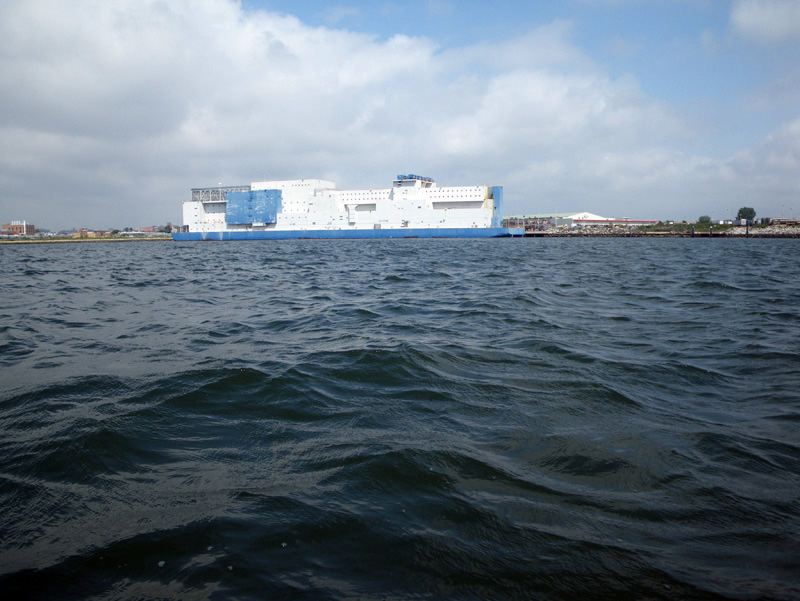
Ironically, we were being held right in between Rikers Island and the prison barge.
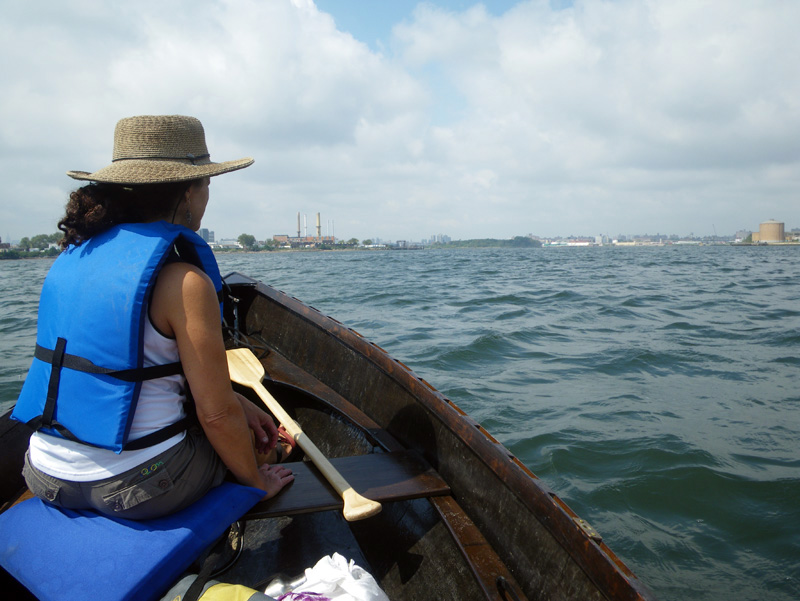
We decided to turn around and try to paddle with the wind.
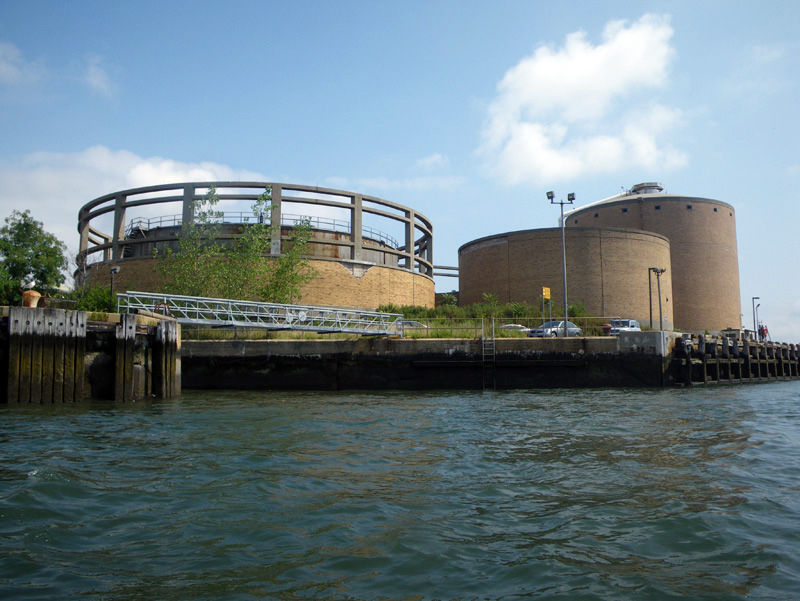
I had seen a little beach back on the Bronx waterfront,
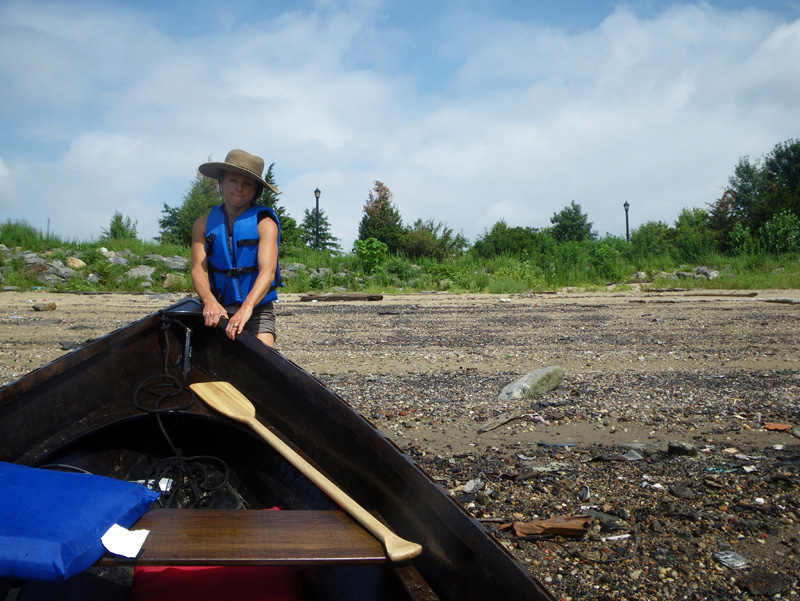
and we pulled the boat out of the water.
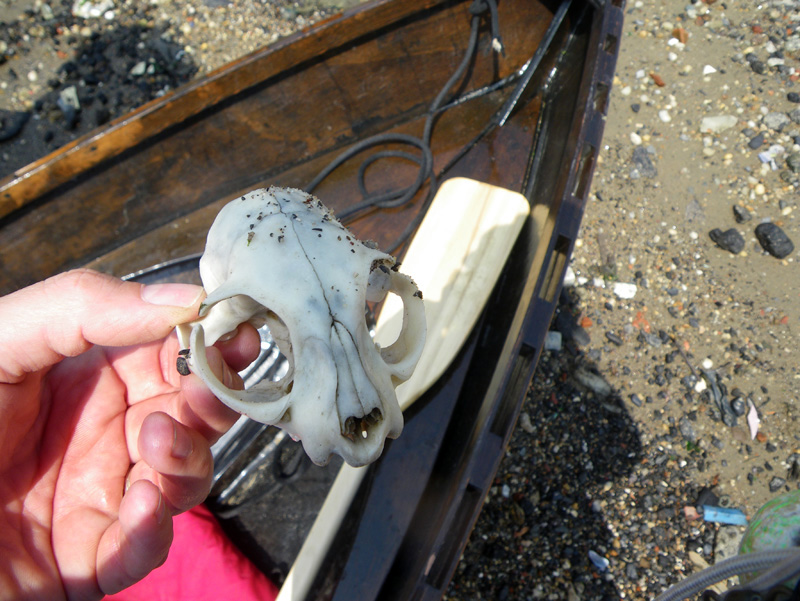
The beach was on a deserted stretch,
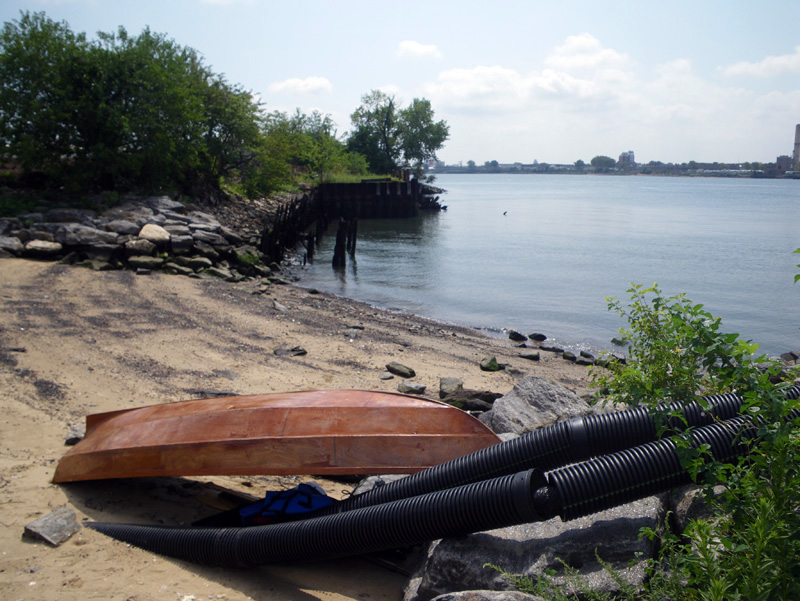
of the pretty little Borretto Point Park.
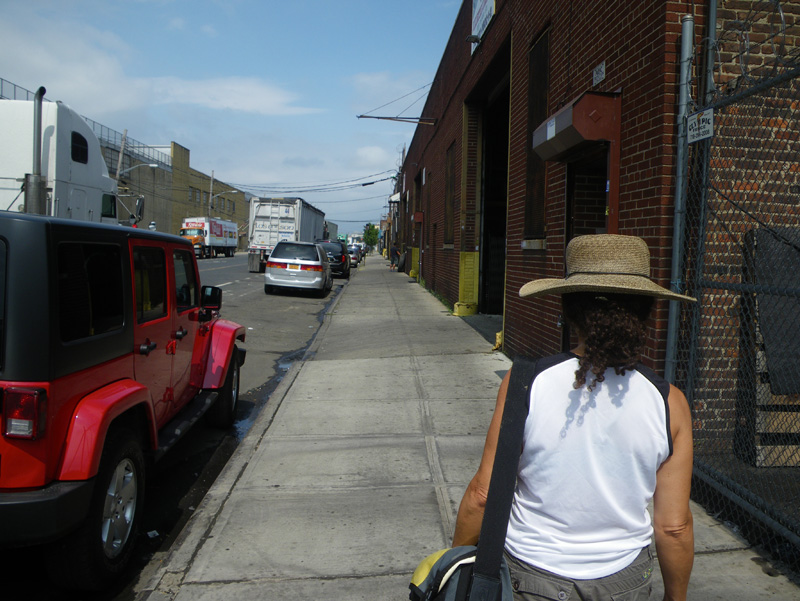
We had miles of buses, trains, and walking between us and the car,
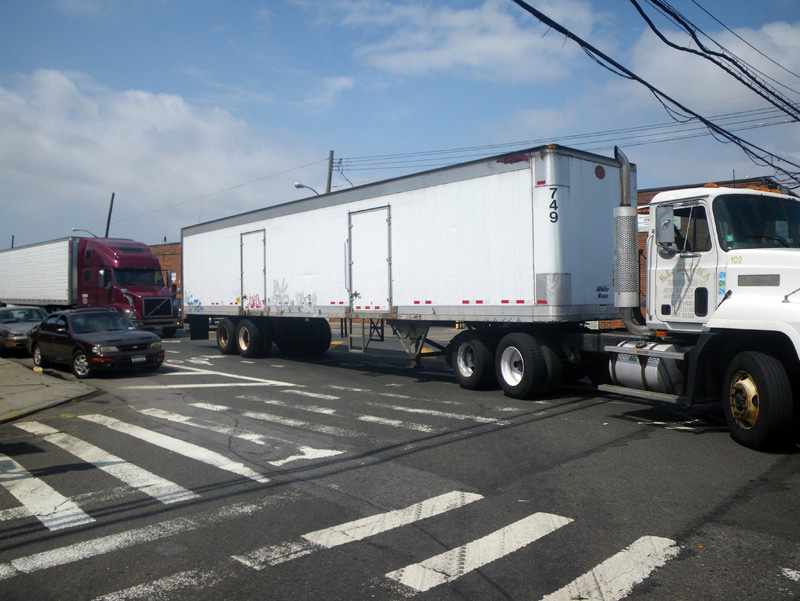
and what had seemed like a breeze by boat was harder by land.
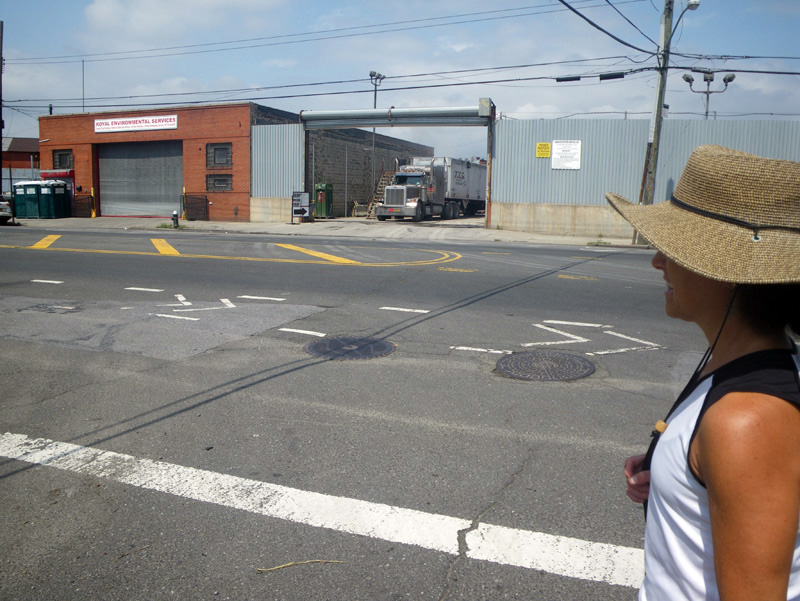
These are the nether regions of New York City, the back end of commerce, populated by trucks and traintracks with almost no humans in sight.
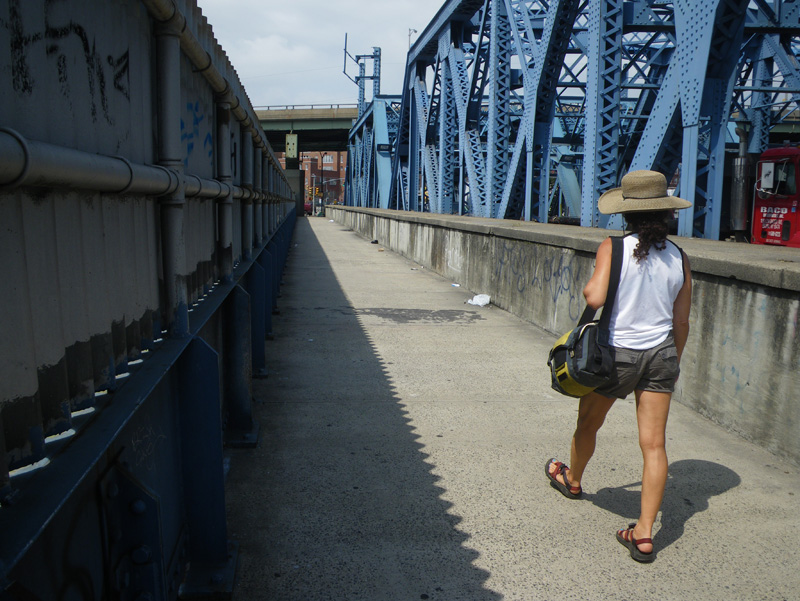
I can tell you that if you have to explore a rough place lime this, Lisa would be a good partner for you.
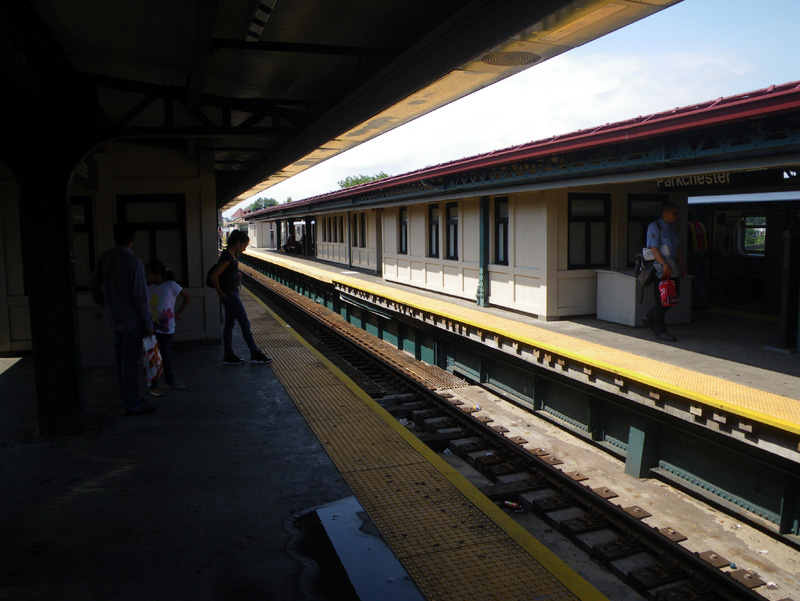
She is efficient, happy to walk, and she brings along good snacks.
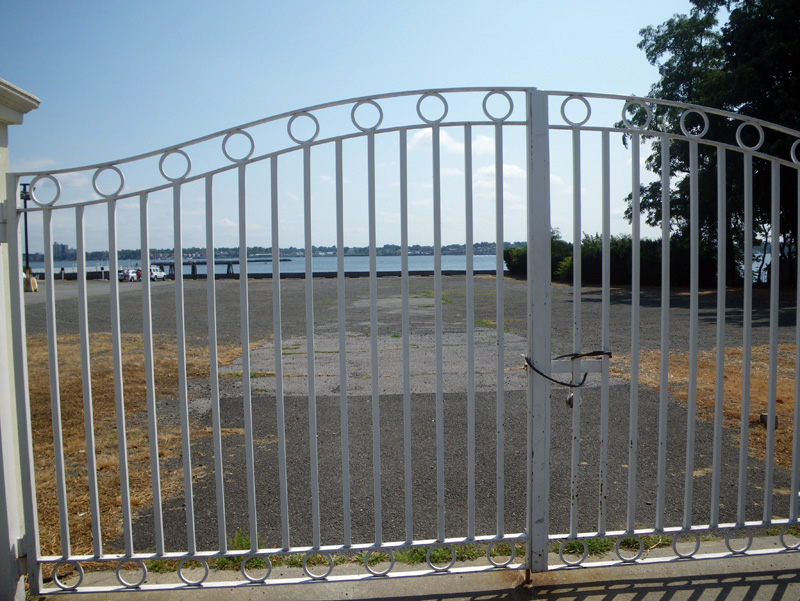
It took us longer to get back north than it had to come south by water,
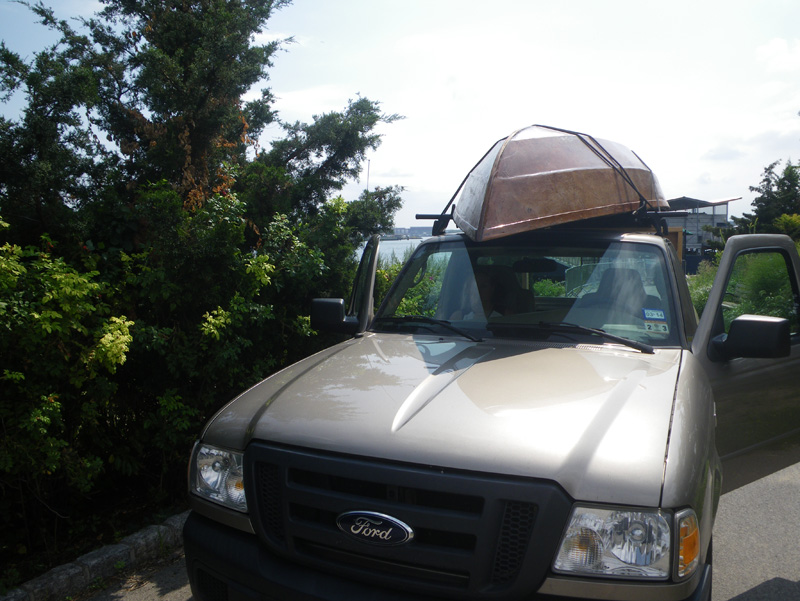
but soon we had reunited all our modes of transportation.
↑ Return to Top of Page ↑